38 how to read food labels for sodium content
Reading food labels: Tips if you have diabetes - Mayo Clinic The serving sizes listed on food labels may be different from the serving sizes in your meal plan. If you eat twice the serving size listed on the label, you also double the calories, fat, carbohydrates, protein, sodium and other ingredients. Consider your daily calorie goals. The same goes for the Daily Value listed on food labels. How to read food labels: MedlinePlus Medical Encyclopedia Always check the serving size first. All the information on the label is based on the serving size. Many packages contain more than 1 serving. For example, the serving size for spaghetti is most often 2 ounces (56 grams) uncooked, or 1 cup (0.24 liters) cooked. If you eat 2 cups (0.48 liters) at a meal, you are eating 2 servings.
How to Read Food Labels: Your Complete Consumer Guide In that light, a good rule of thumb is that 5% DV or less of a nutrient per serving is considered low, while 20% or more is high. Look for foods that are high in the good stuff, such as fiber, and low in the bad stuff, like saturated fat, sodium, and added sugars.
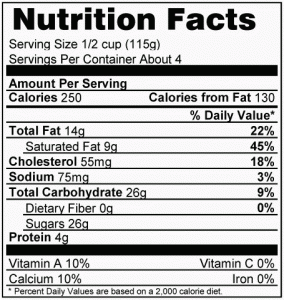
How to read food labels for sodium content
Food labels - NHS High: more than 1.5g of salt per 100g (or 0.6g sodium) Low: 0.3g of salt or less per 100g (or 0.1g sodium) For example, if you're trying to cut down on saturated fat, eat fewer foods that have more than 5g of saturated fat per 100g. Some nutrition labels on the back or side of packaging also provide information about reference intakes. How to Read Food Labels Without Being Tricked - Healthline The product may contain very little whole grains. Check the ingredients list — if whole grains aren't in the first three ingredients, the amount is negligible. Fortified or enriched. This ... How do you read a food label for salt / sodium? - Irish Kidney Diet You would therefore calculate your portion's nutritional content as follows: Calories : (110 /30 ) x 50 = 183 calories Per 100g - shows the amount of each nutrient that is contained in 100g of the food. If a portion contains more than 500mg/0.5g of sodium or 1.25g of salt it is a high salt option. Previous Next Lunchbox Treats Spring Time Treats
How to read food labels for sodium content. Food Labels | CDC - Centers for Disease Control and Prevention If you eat the whole thing, you are eating 8 times the amount of calories, carbs, fat, etc., shown on the label. Total Carbohydrate shows you types of carbs in the food, including sugar and fiber. Choose foods with more fiber, vitamins, and minerals. Choose foods with lower calories, saturated fat, sodium, and added sugars. How to Read a Food Label to Limit Sodium: Care Instructions On most foods, there is a Nutrition Facts label. This will tell you how much sodium is in one serving of food. Look at both the serving size and the sodium amount. The serving size is located at the top of the label, usually right under the "Nutrition Facts" title. The amount of sodium is given in the list under the title. How to Find Sodium , California - lake.networkofcare.org { "consumer": "Reading food labels Most packaged foods have a Nutrition Facts label. This will tell you how much sodium is in one serving of food. Here are some tips to help you. Look at both the serving size and the sodium amount. Food labels list the amount of sodium for each serving. The serving size is located at the top of the ... How to Decode Salt on Food Labels: Low Sodium vs Reduced Sodium vs ... These foods have at least 25% less sodium than their original version. "Light in sodium" or "lightly salted" items are reduced by 50%. Unlike low sodium foods, reduced sodium foods can still be swimming in sodium. (One reduced-sodium soup we saw packs 660 mg per serving!) Keep an eye out for reduced sodium soups, reduced sodium chicken ...
How to understand food labels | Eat For Health The Nutrition Information Panel on a food label offers the simplest and easiest way to choose foods with less saturated fat, salt (sodium), added sugars and kilojoules, and more fibre. It can also be used to decide how large one serve of a food group choice or discretionary food would be and whether it's worth the kilojoules. How to Read Salt Labels | Cooking Light This is the most stringent reduced-sodium label. Each food can have only 140mg or less sodium (natural or added) per serving. For Example: Nabisco Wheat Thins Hint of Salt (60mg) vs. Nabisco Original Wheat Thins (230mg) Sodium Savings: 170mg per 16 crackers By Sidney Fry, MS, RD Reading a Label for Sodium Content Reading a label for sodium content is never necessary when you're using fresh meat, fresh rice, and fresh vegetables in the food prep process. Substitute cured foods for those that are fresh instead. Skip the ham, bacon, lox, olives, and sauerkraut in favor of fresh veal, pork fish, and eggs. Choose low-salt deli meats — reading a label for ... How to Decode Sodium Labels - Microsalt Decoding sodium levels in nutrition labels. Some food manufacturers will use the terms mentioned in the above section to list the sodium amount. Other manufacturers will just list the sodium on the nutrition label. In this case, the sodium might appear as sodium, salt, or the chemical symbol of sodium, which is Na. When you are decoding the ...
How to Read Sodium Percentages on Food Packages A "very low sodium" product must have less than 35 milligrams of sodium, while a "low sodium" product must have less than 140 milligrams of sodium. All in the Name Along with reading the food... Sodium & Your Heart Health: How To Read Nutrition Facts On Food Labels Food can be considered low-sodium if the total sodium content is 140mg or less and is based on serving size. Overindulging on the portions with a low-sodium food can potentially be just as detrimental as eating a food that's high in salt. Additionally, people shopping for low-sodium foods should opt for packaging that features a 5% DV or lower. Understanding Food Nutrition Labels | American Heart Association Learn what to look for on the label. 1 - Start with the serving information at the top. This will tell you the size of a single serving and the total number of servings per container (package). 2 - Next, check total calories per serving and container. How To Read Food and Beverage Labels - National Institute on Aging At the top of the Nutrition Facts label, you will find the total number of servings in the container and the food or beverage's serving size. The serving size on the label is based on the amount of food that people may typically eat at one time and is not a recommendation of how much to eat. Read more about serving and portion sizes.
PDF Read the Nutrition Facts Label for Sodium! - National Institutes of Health the food is high or low in sodium. Choose products with the lowest Percent Daily Value for sodium: 5 percent or less is low, and 20 percent or more is high. Frozen Peas and Carrots One serving (½ cup) of frozen peas and carrots has 125 mg of sodium and 5 percent of the Daily Value for sodium. Canned Peas and Carrots One serving (½ cup) of ...
How to Understand and Use the Nutrition Facts Label | FDA Example: Look at the amount of sodium in one serving listed on the sample nutrition label. Is %DV of 37% contributing a lot or a little to your diet? Check the General Guide to %DV. This product...
Sodium on the Nutrition Facts Label | FDA - U.S. Food and Drug ... FDA's Education Materials Sodium in Your Diet Fact Sheet A printable backgrounder that offers the basics on sodium's health effects, easy how-to's for using the Nutrition Facts label to reduce...
How do you read a food label for salt / sodium? - Irish Kidney Diet You would therefore calculate your portion's nutritional content as follows: Calories : (110 /30 ) x 50 = 183 calories Per 100g - shows the amount of each nutrient that is contained in 100g of the food. If a portion contains more than 500mg/0.5g of sodium or 1.25g of salt it is a high salt option. Previous Next Lunchbox Treats Spring Time Treats
How to Read Food Labels Without Being Tricked - Healthline The product may contain very little whole grains. Check the ingredients list — if whole grains aren't in the first three ingredients, the amount is negligible. Fortified or enriched. This ...
Food labels - NHS High: more than 1.5g of salt per 100g (or 0.6g sodium) Low: 0.3g of salt or less per 100g (or 0.1g sodium) For example, if you're trying to cut down on saturated fat, eat fewer foods that have more than 5g of saturated fat per 100g. Some nutrition labels on the back or side of packaging also provide information about reference intakes.

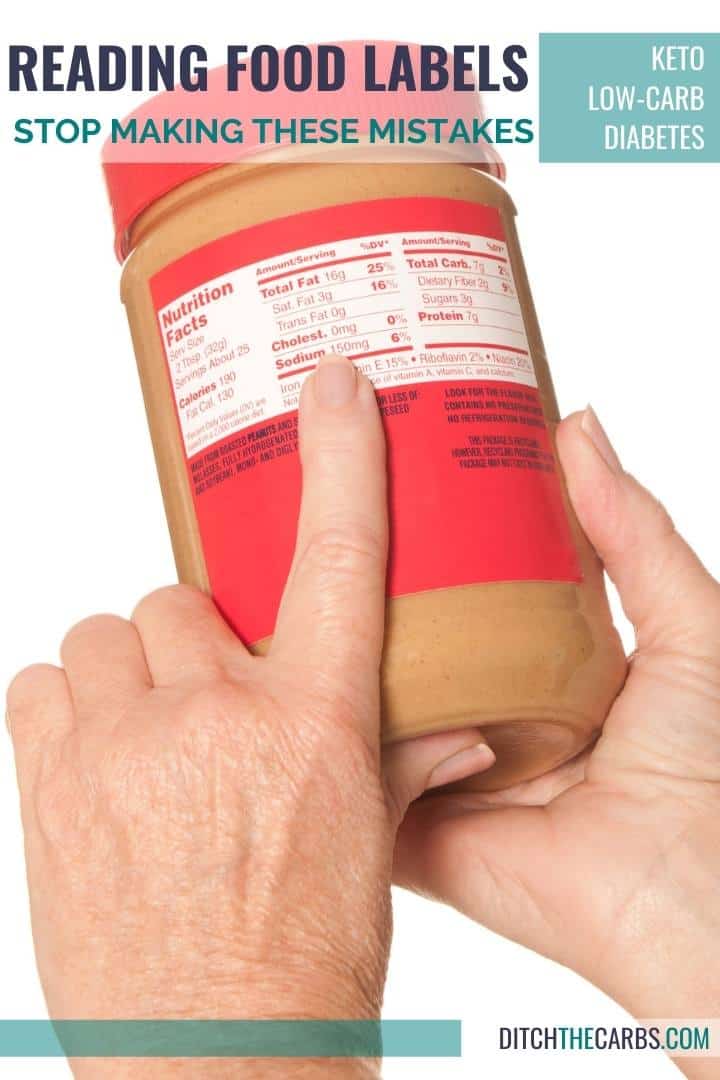

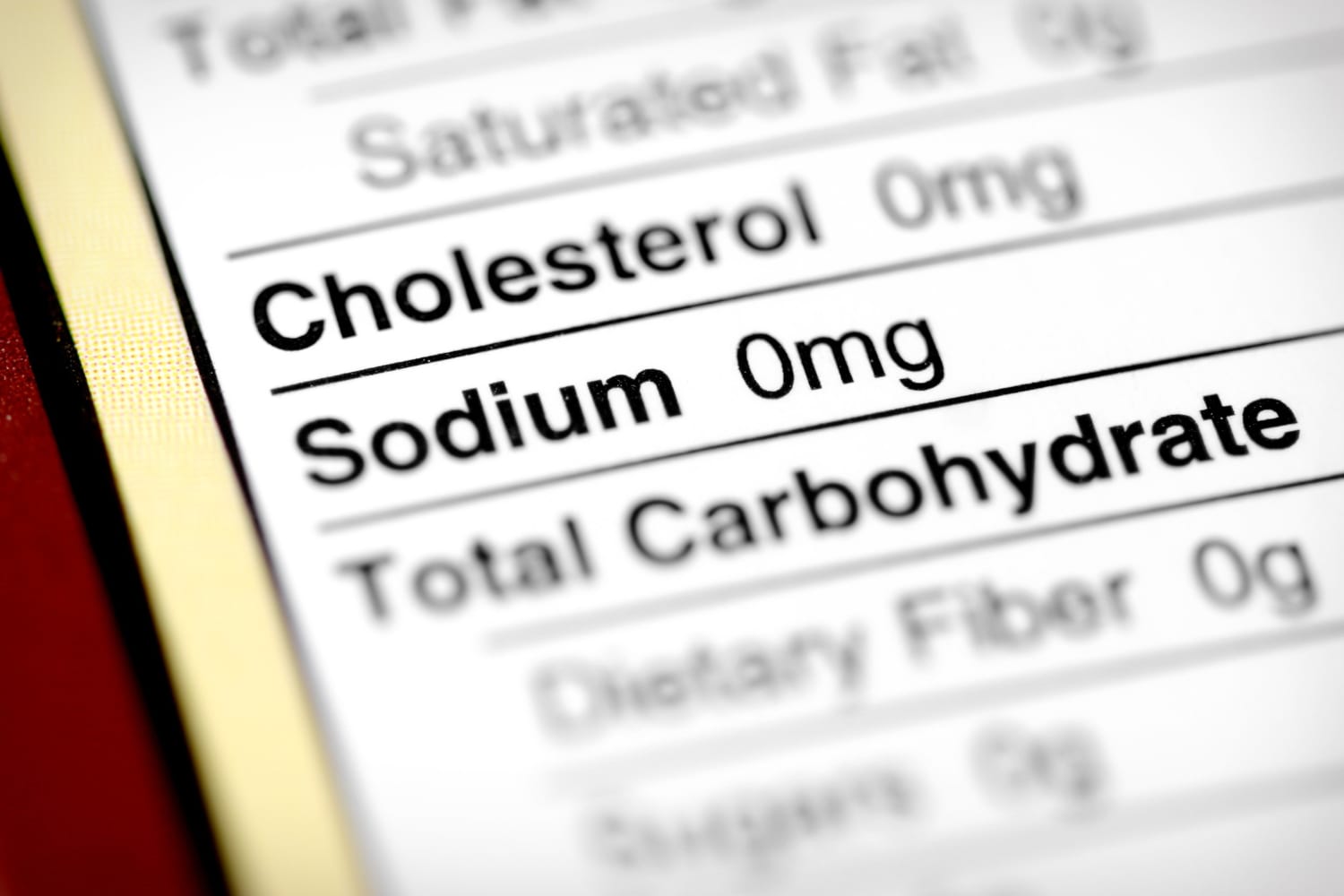
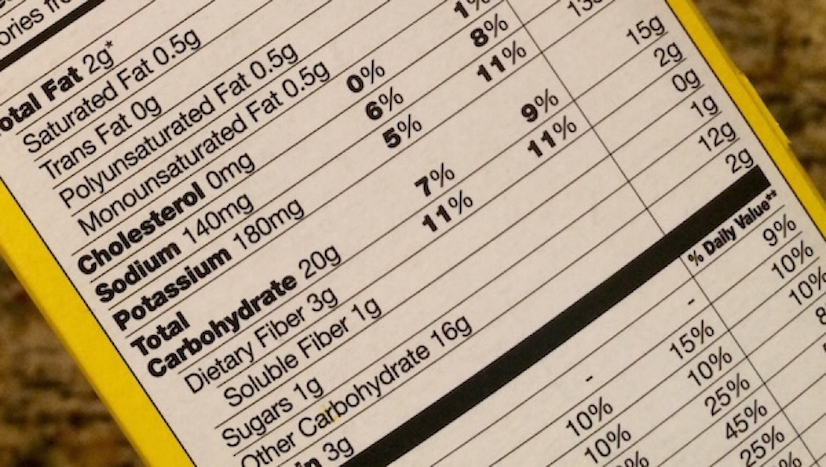
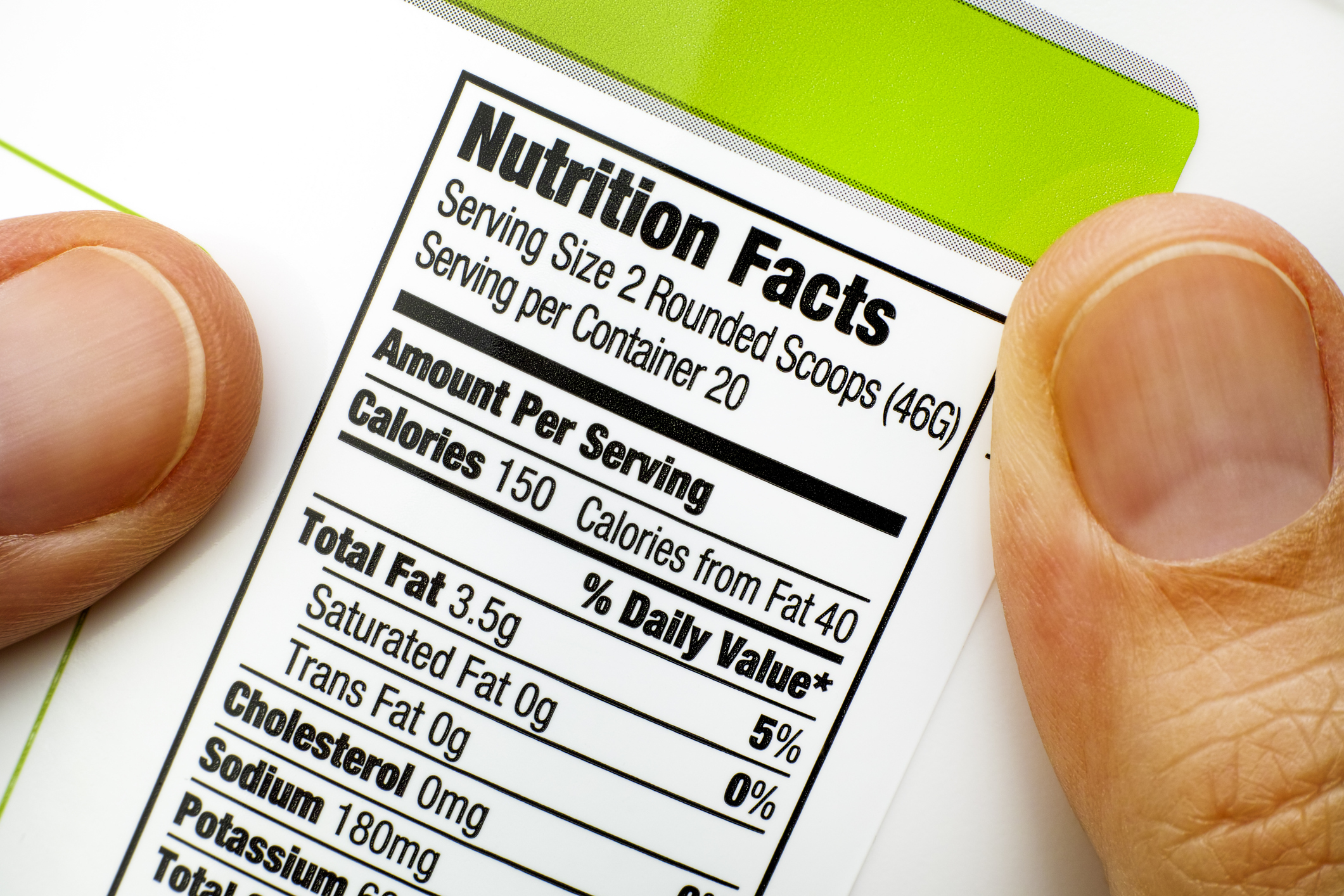

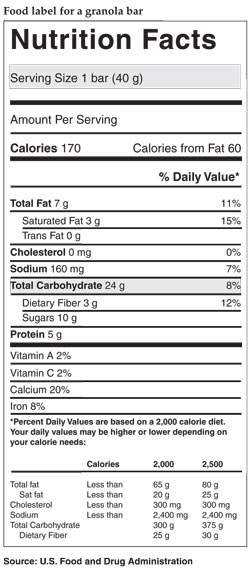
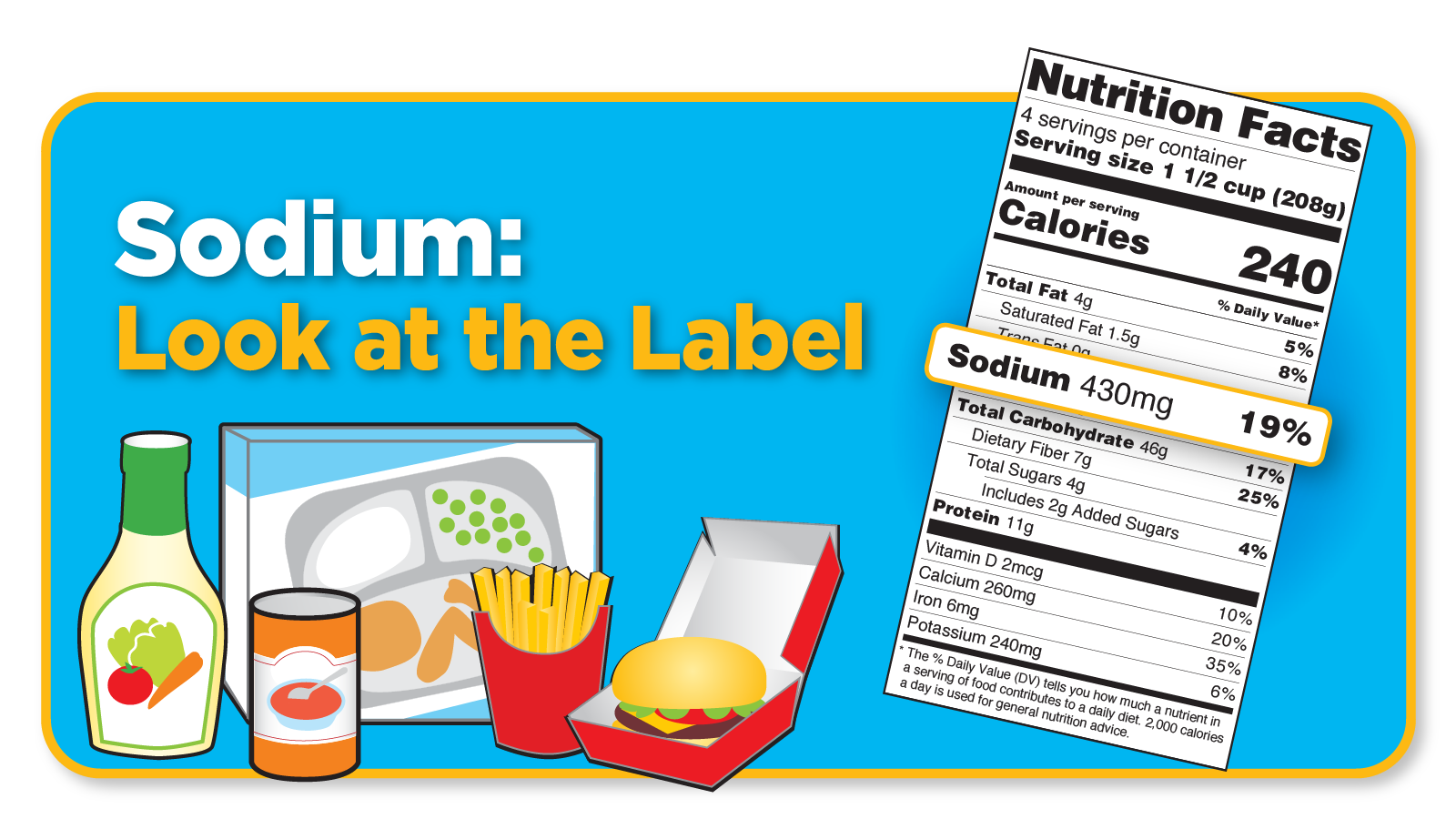


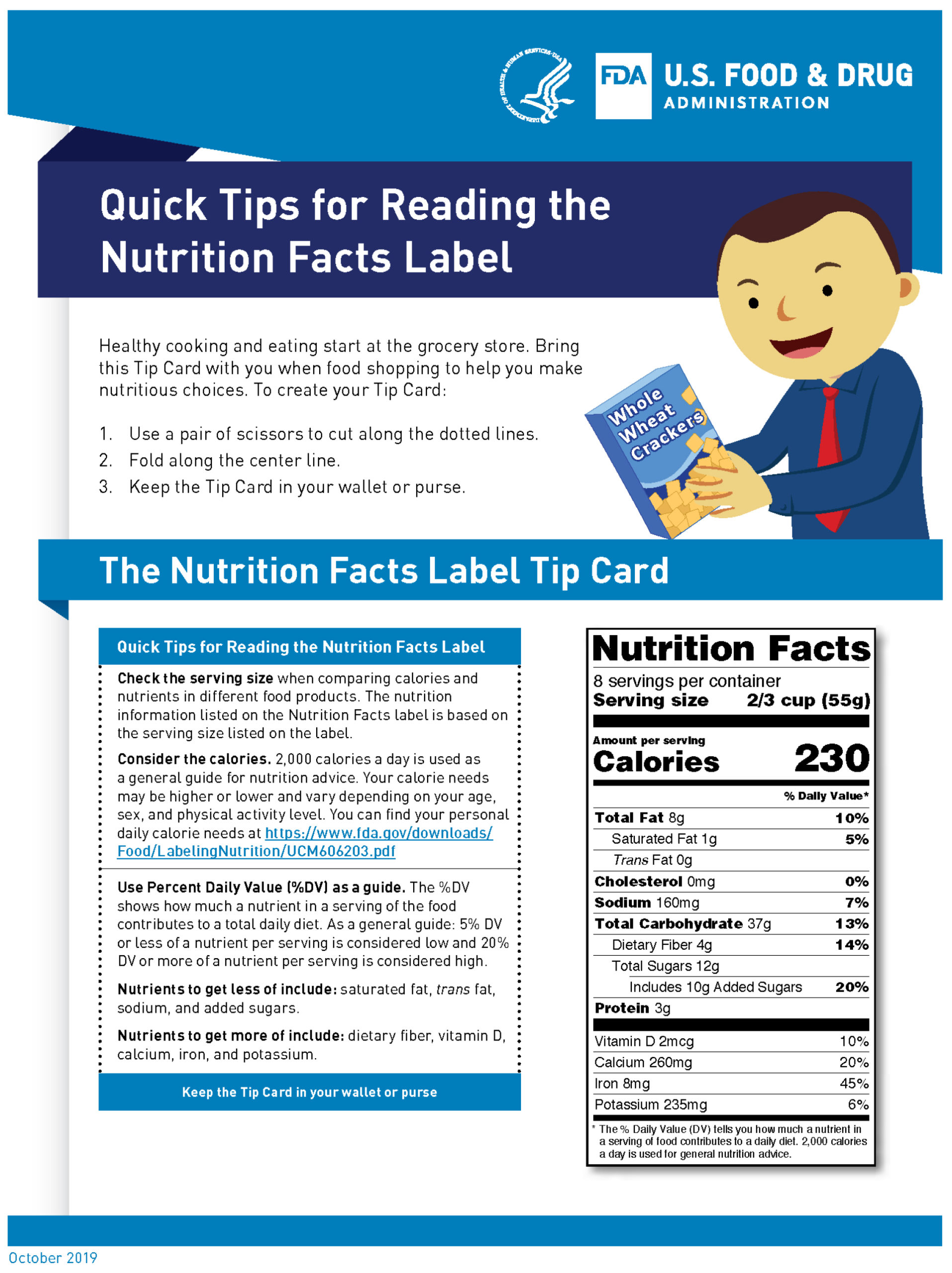
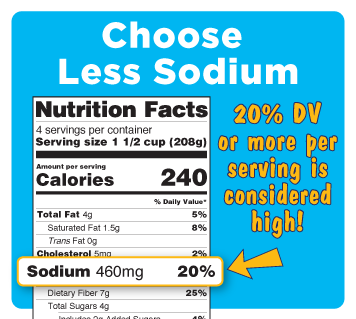
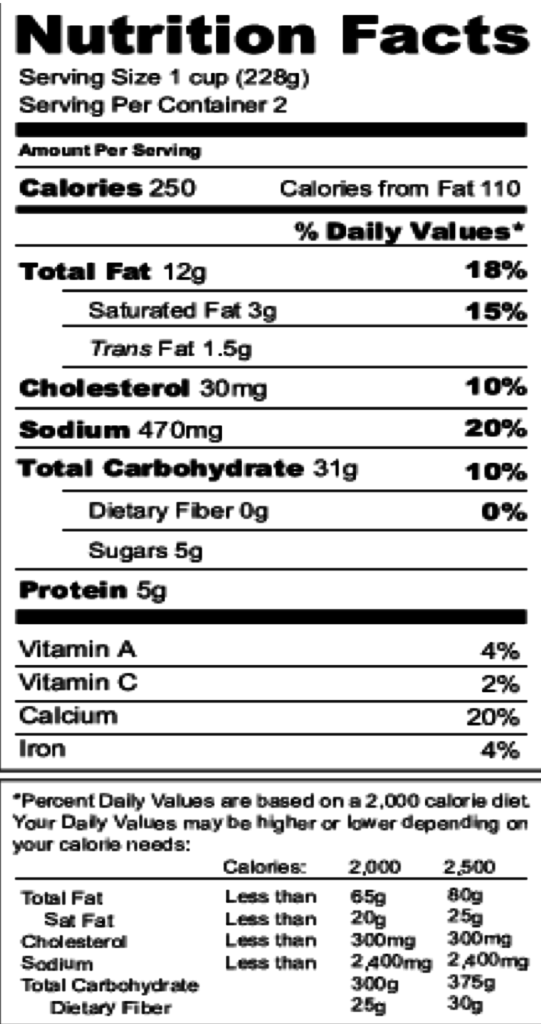


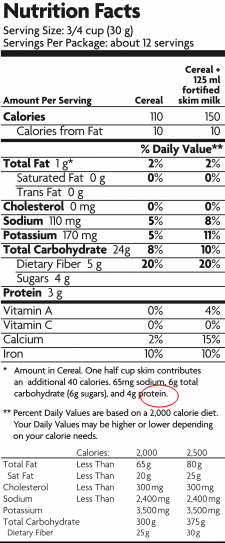
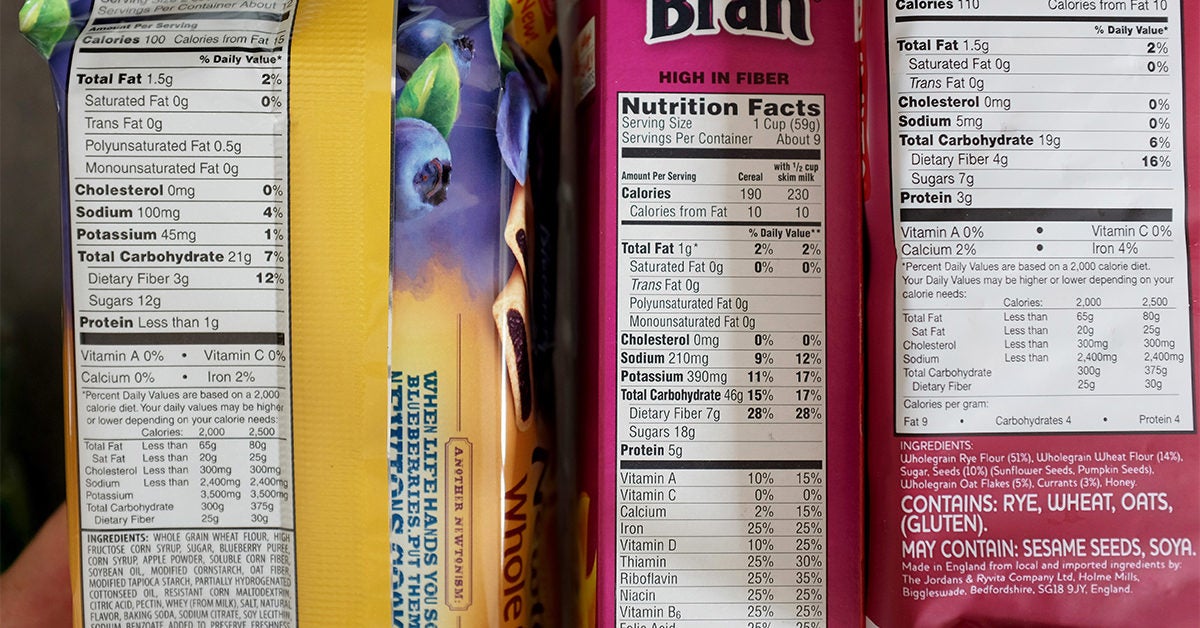

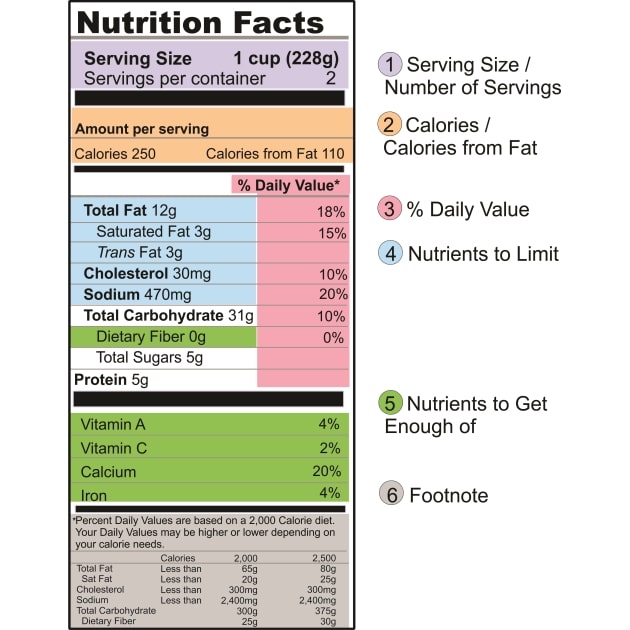
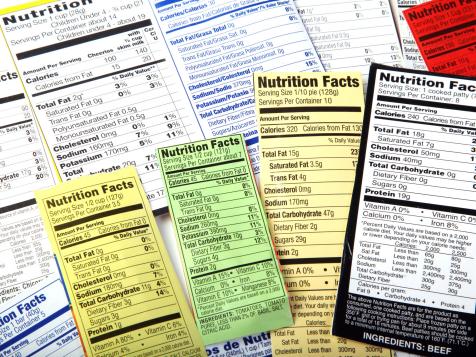

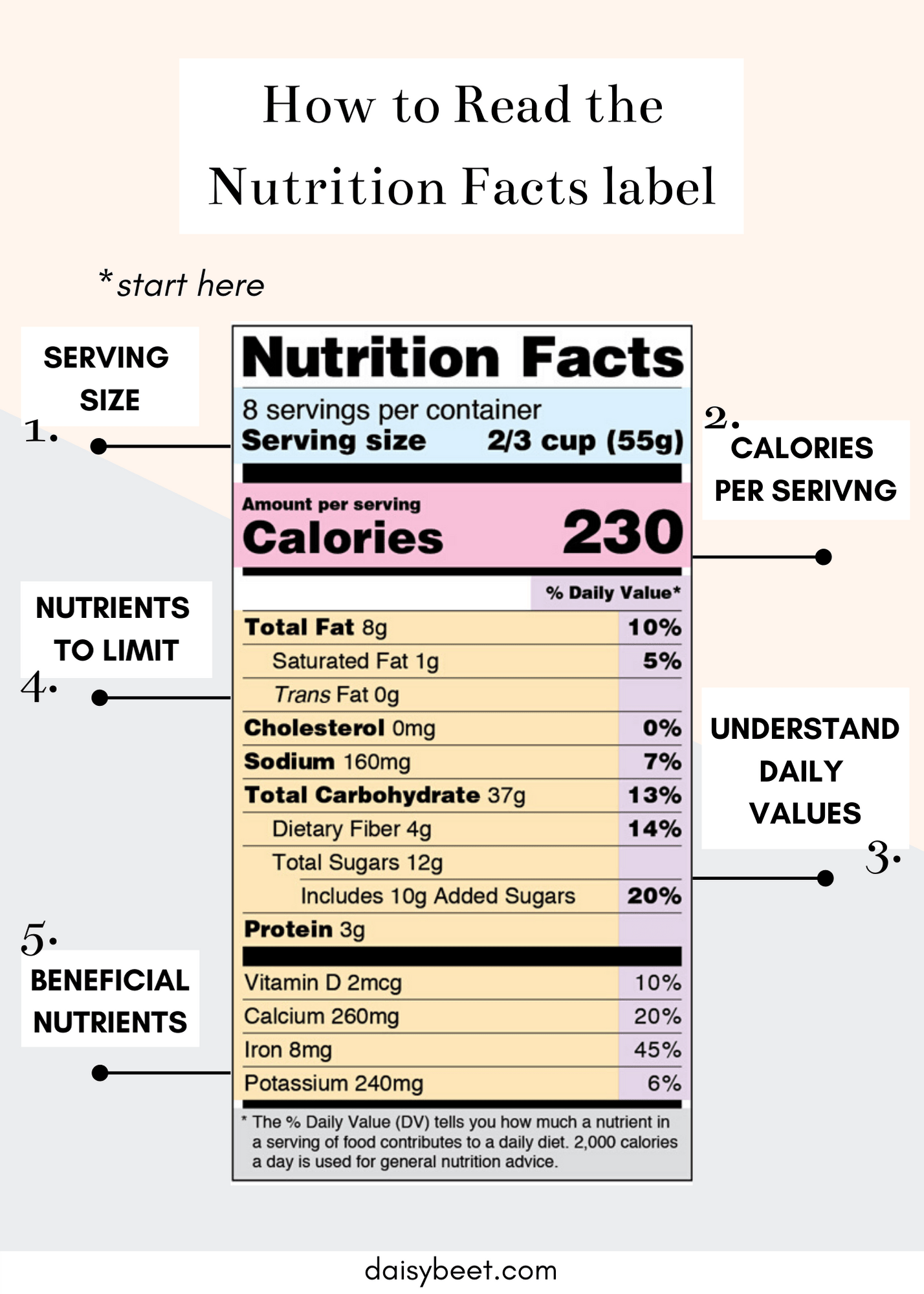
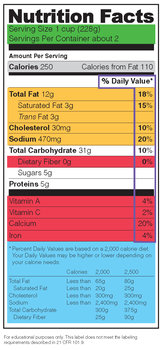
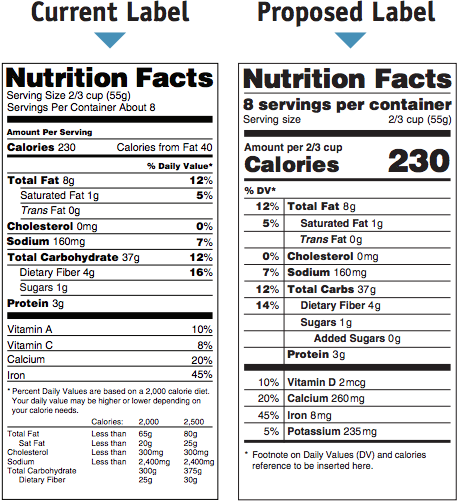
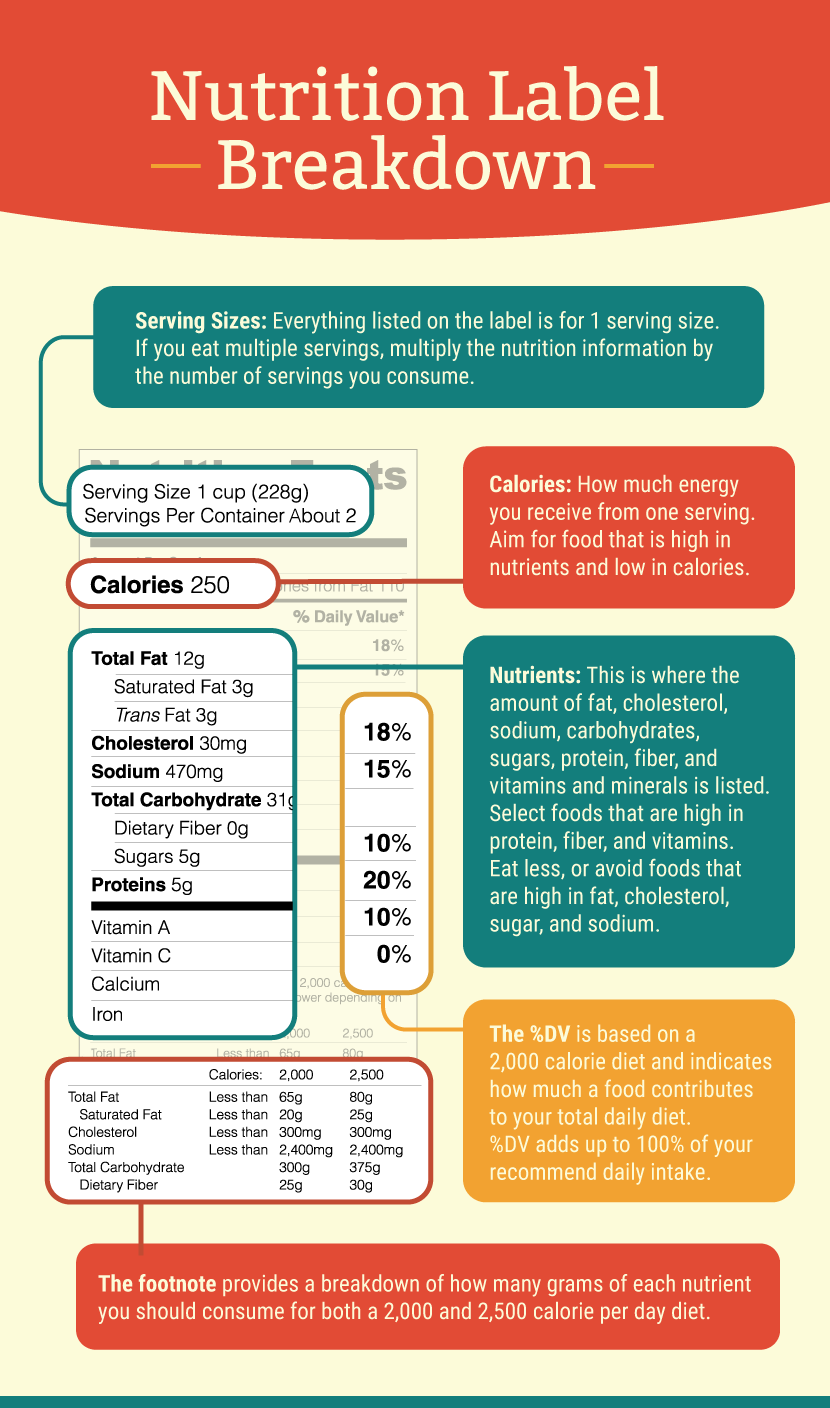

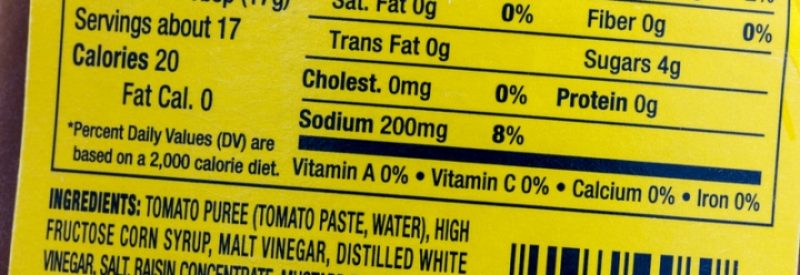

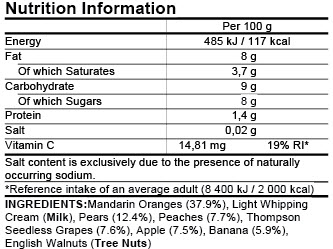
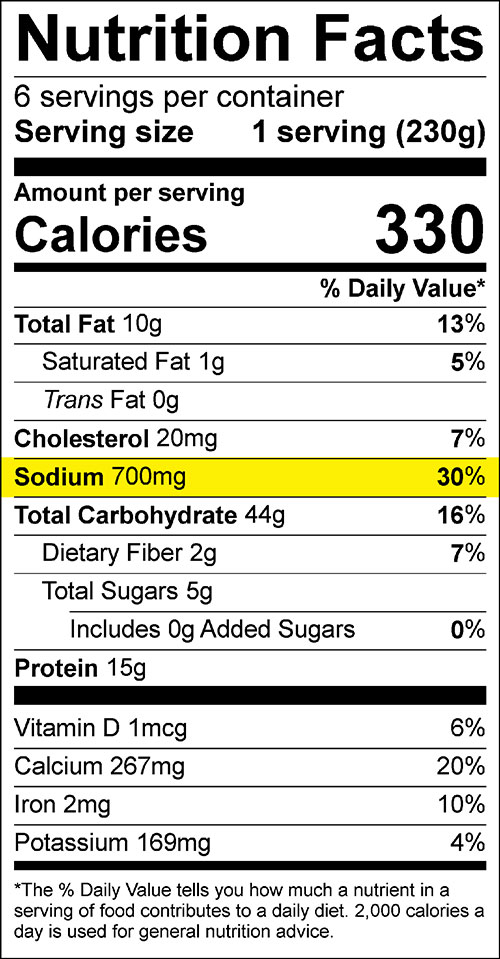

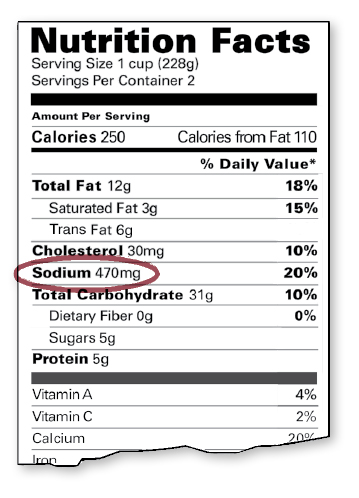
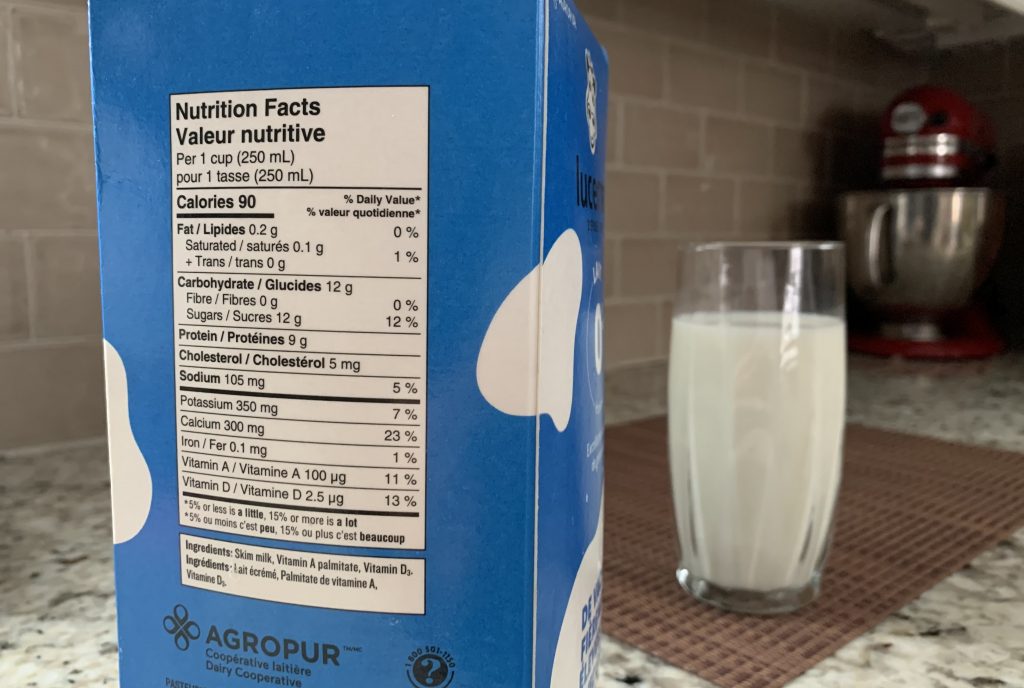


Post a Comment for "38 how to read food labels for sodium content"